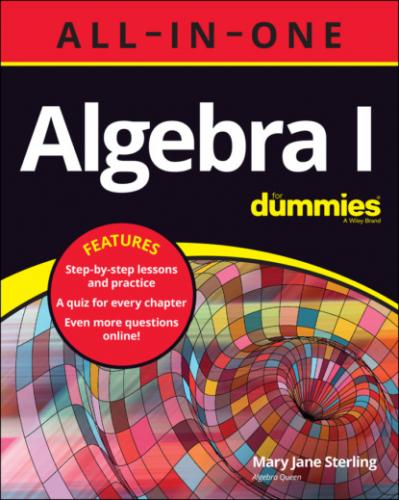A. Because 5 times 8 is 40, you multiply both the numerator and denominator by 5. In reality, you’re just multiplying by 1, which doesn’t change the real value of anything.
Q. Reduce
A.
7
8 Find an equivalent fraction with a denominator of 30 for
9 Reduce this fraction:
10 Reduce this fraction:
Determining lowest terms
A fraction is in its lowest common terms when there is no common factor of the numerator and denominator except the number 1. Nothing will divide both of them evenly.
1 Look for numbers that evenly divide both the numerator and the denominator.If you find more than one number that divides both evenly, choose the largest.
2 Divide both the numerator and the denominator by the number you chose, and put the results in their corresponding positions.
When reducing fractions, your fraction isn’t wrong if you don’t choose the largest-possible divisor. It just means that you have to divide again to get to the lowest terms. When reducing the fraction
Q. Write the fraction
A. The divisors of 1001 are 7, 11, and 13. Are any of these divisors of 1540? Yes, 7 divides 1540 and 11 divides 1540.
Q. Determine if the fraction
A. Yes. The numerator is divisible by 11 and 13. The denominator is divisible by 9 and 37. They don’t share any common factors, so this fraction is in its lowest terms.
11
12 Determine if the fraction is in lowest terms:
13 Determine if the fraction is in lowest terms:
14 Determine if the fraction is in lowest terms:
Making Proportional Statements
A proportion is an equation with two fractions equal to one another. Proportions have some wonderful properties that make them useful for solving problems — especially when you’re comparing one quantity to another or one percentage to another.
Given the proportion
. (The cross-products form an equation.)
. (The “flip” is an equation.)
. (You can reduce either fraction vertically.)
. (You can reduce the numerator or denominator horizontally.)
A. The numerator and denominator in the fraction on the left have a common factor of 6. Multiply each by
Q. If Agnes can type 60 words per minute, how long will it take her to type a manuscript containing 4,020 words (if she can keep typing at the same rate)?
A. Set up a proportion with words in the two numerators and the corresponding number of minutes in the denominators:
Divide both numerators by 60 and then cross-multiply to solve for x.
It will take her 67 minutes — just over an hour.
15
16 Solve for x:
17 Solve for x:
18
